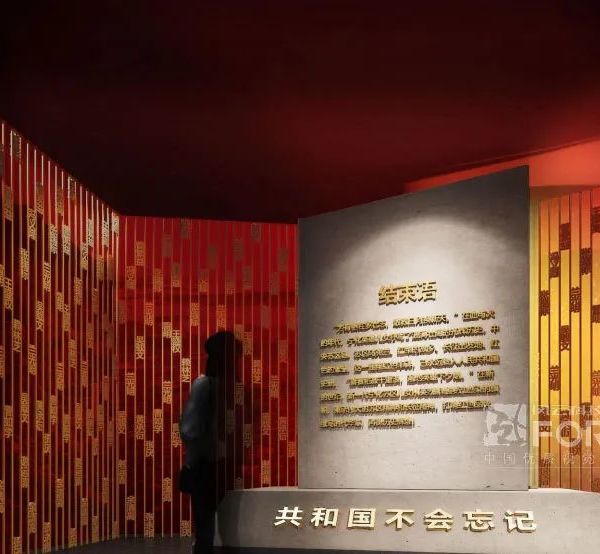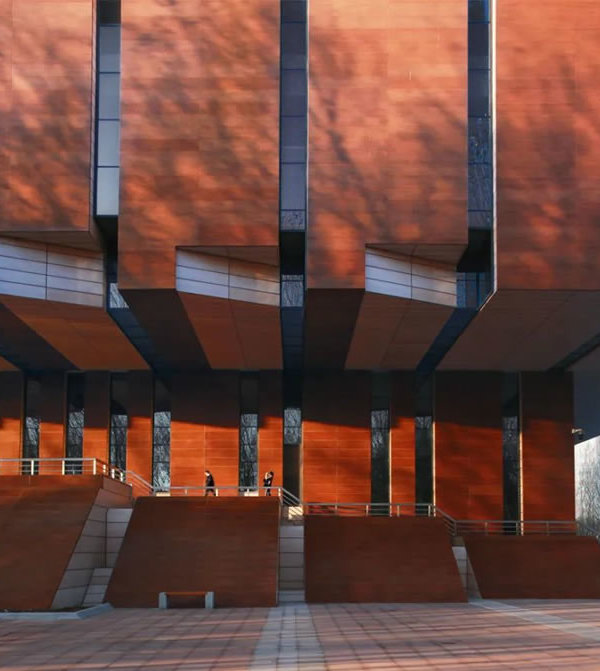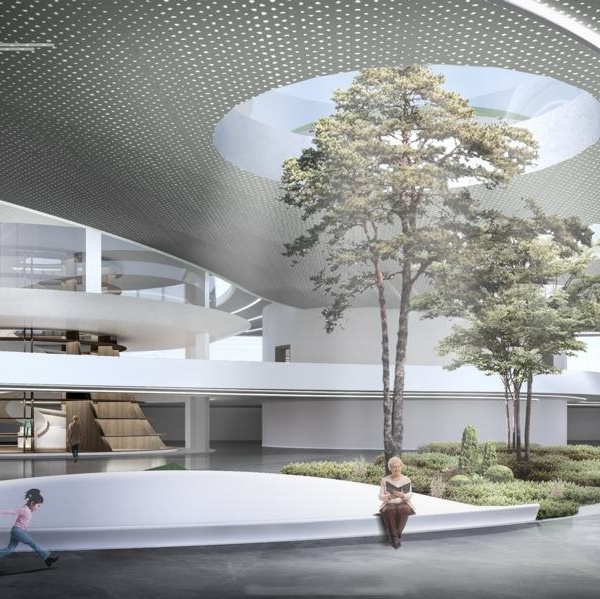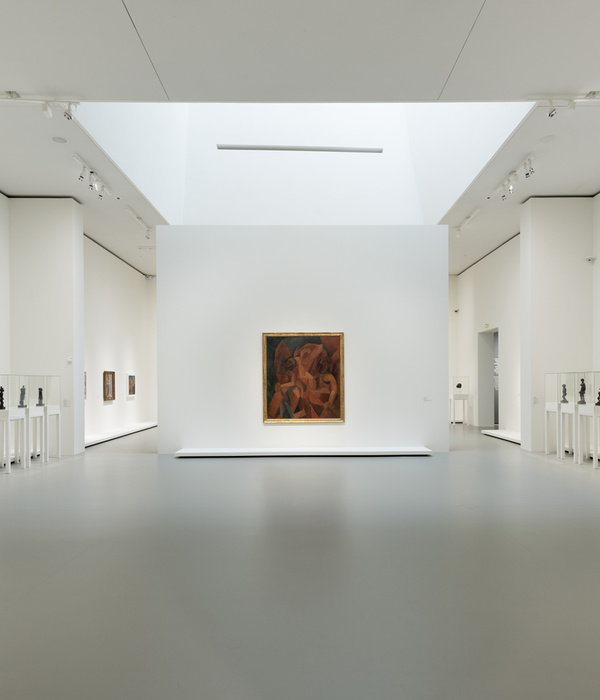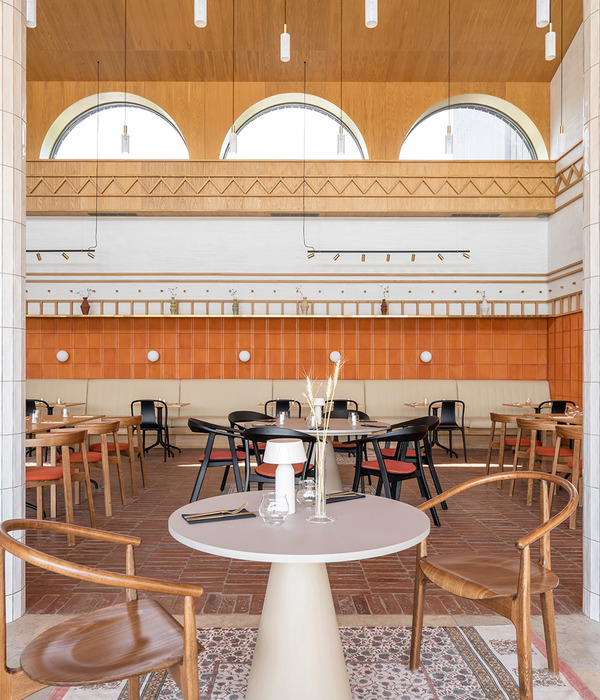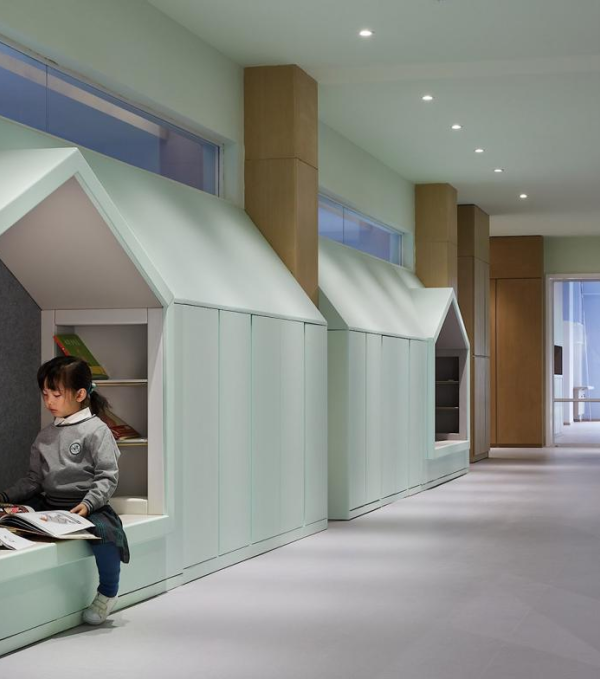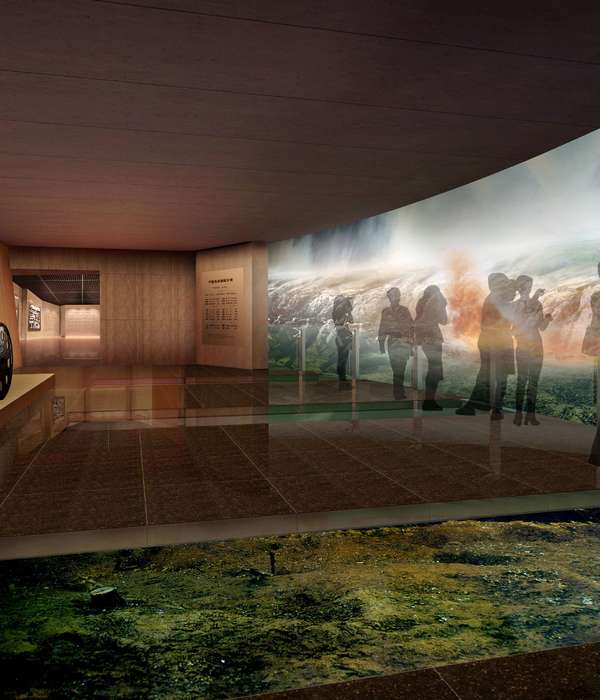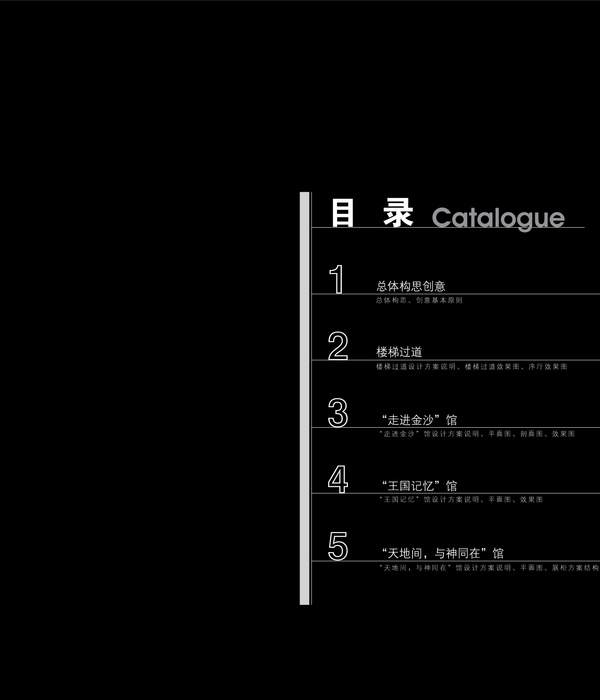COBE事务所在其近期完工的Tingbjerg图书馆和文化之家项目中重新诠释了丹麦风格的现代主义。Tingbjerg图书馆旨在成为一个全新的社会及文化目的地,促进社区的互动以及城市的发展和转型。自2018年10月1日开幕以来,Tingbjerg图书馆和文化之家已成为城市中的一处新地标,吸引着哥本哈根各个年龄阶段和背景的人们聚集于此。COBE事务所希望使图书馆成为城市的催化剂,通过各类社会活动和文化活动来促进当地社区的良性发展——Tingbjerg是哥本哈根较为边缘化的地区之一,有着较高的犯罪率,尽管如此,这里同样也是丹麦现代主义建筑的发展基石。
The Danish architects COBE have reinterpreted Danish modernism in its newly completed Tingbjerg Library and Culture House. COBE has created a new social and cultural destination in the Copenhagen neigbourhood Tingbjerg that invites community interaction, engagement and signals a new urban transformation. With the opening October 1, 2018, the Tingbjerg Library and Culture House is a new landmark building that will be a new gathering point for people of all ages and backgrounds in Copenhagen, Denmark. The new library and culture house has been designed with input from the residents of the Tingbjerg community to create a new destination at the heart of their neighbourhood. COBE’s aim is for the project to serve as an urban catalyst and an architectural framework for social and cultural activities, thereby contributing to a positive development of the local community – currently a marginalised area with high crime rates but also an architectural cornerstone in Danish modernism.
▼建筑鸟瞰,aerial view ©Rasmus Hjortshøj – COAST
COBE建筑事务所的创始人兼建筑师Dan Stubbergaard表示:“作为一名建筑师,我很荣幸能够有机会在Tingbjerg完成项目,因为这里有着丰富的建筑历史,也因为它是由两位优秀的丹麦现代主义大师Steen Eiler Rasmussen和Carl Theodor Sørensen联手打造的成果,我希望自己的作品也能够与他们的成就相匹配。从设计之初,委托方就制定了一个很高的标准。我们希望为Tingbjerg打造一个新的目的地,通过谨慎的材料和形式选择来展现出建筑对周围环境的尊重,同时也要为建筑赋予明显的身份特征。建筑的外立面将其内部的活动充分地展示出来,在吸引人们进入的同时也使该地区的环境变得更加安全。与此同时,这座建筑也为Tingbjerg赋予了独一无二的特征。”
“ As an architect, it is an honour to have the opportunity to build in Tingbjerg because of its rich architectural history and because it was created by two prominent figures in Danish modernism, architect Steen Eiler Rasmussen and landscape architect Carl Theodor Sørensen, so you feel obligated to try to match their achievements. Before we even began our work the bar was set high. We wanted to create a new destination in Tingbjerg that respects both its surroundings through choice of materials and shape while at the same time creating a strong identity of its own. The facade looks like a building turned inside out displaying its many activities to the surroundings. The architecture is intended as an open invitation for people to come inside, while at the same time promoting safety in the area and also developing Tingbjerg’s unique character, ” says Dan Stubbergaard, architect and founder of COBE.
▼坐落在场地中的楔形体量,a large wedge-shaped shell in the site ©Rasmus Hjortshøj – COAST
以“排字机”为灵感 | A TYPESET CASE
建筑的外形犹如一个巨大的楔形壳体,在最窄的地方,建筑的宽度仅为1.5米。作为Tingbjerg学校的延伸,图书馆拥有一个倾斜的屋顶,并与低处的学校入口相连。通过主立面上的玻璃幕墙,人们可以直接“读取”建筑内部的活动,就像一款老式的排字机那样。事实上,宽阔的玻璃幕墙也是以排字机为灵感而设计出来的。幕墙的背面是一系列多功能的活动空间,包括教室、工作坊、讲座空间和音乐表演空间等。建筑内各种类型的活动都可以从内部或外部看到,从而也起到了激活外立面的作用。
Tingbjerg Library and Culture House has been conceived as a large wedge-shaped shell and at its narrowest the new building is only 1.5 metres wide. It has been built as an extension to the Tingbjerg school with an angled roof sloping down to the school’s entrance. Through the transparent glass facade inlaid into the wide face of the wedge, the activities inside can be “read” much like an old-fashioned typeset case which has been placed on end. In fact, the very idea of the type set case inspired the design of the large glass facade, where the building’s occupants can engage in a myriad of activities and events within multifunctional rooms – including classes, workshops, lectures and musical performances. All activities are visible from within the building inside and animate the glass facade from without.
▼主立面的玻璃幕墙以旧式排字机为设计灵感,in some way, the design of the large glass facade is inspired by the old-fashioned typeset case ©Rasmus Hjortshøj – COAST
▼建筑最窄的地方宽度仅为1.5米,at its narrowest the new building is only 1.5 metres wide ©Rasmus Hjortshøj – COAST
▼入口庭院,courtyard view ©Rasmus Hjortshøj – COAST
一座文化山村 | A CULTURAL MOUNTAIN VILLAGE
楔形的结构定义出了建筑的核心区域——这里是一间开放的门厅,它作为宏大的统一空间被立体地置入到建筑当中。四个楼层中分布着高低不一的平台和嵌入式空间,使人联想到那种紧紧依附在坡地上的小山村。这样的设计不但能够促进使用者参加社交活动,使其轻松地观察到建筑中发生的事情,还能够帮助人们很快找到一个舒适的小空间,沉浸在氛围良好的阅读世界。整体空间兼顾了灵活性和耐用性,并且能够适应各种功能需要。
The heart of the building is defined by the wedge form – that becomes an open foyer – extending three-dimensionally into the building as a grand unifying space. Shifting floor plates with niches and balconies on the project’s four levels are reminiscent of a small mountain village clinging to a hillside. The design makes it possible for users to participate in social activities, to simply observe what is happening in the building or to find a quiet spot within a niche to immerse themselves in a good read. The building is characterised by its flexibility and robustness, making it adaptable for a multitude of uses.
▼开放的门厅,the open foyer ©Rasmus Hjortshøj – COAST
▼活动空间,activity space ©Rasmus Hjortshøj – COAST
▼阅读空间,reading area ©Rasmus Hjortshøj – COAST
▼四个楼层中分布着高低不一的平台和嵌入式空间,如同一座小小的文化山村,shifting floor plates with niches and balconies on the project’s four levels are reminiscent of a small mountain village clinging to a hillside ©Rasmus Hjortshøj – COAST
尊重历史 | RESPECTING HISTORY
为了与Tingbjerg丰富的现代主义建筑语言保持一致,COBE事务所选用了与附近建筑相同的材料。黄色的条形砖饰面和倾斜的屋顶均展现出了对历史环境的尊敬。室内空间选用了色泽温暖的木制胶合板作为饰面,从而与外立面的砖墙形成对话。无缝的立面在试图融入Tingbjerg环境的同时,也从物质性和形式上对Tingbjerg的建筑语言提出了挑战。
In keeping with Tingbjerg’s rich modernist architectural language, COBE has chosen materials that have been used in the neighbourhood. The project’s cladding in yellow brick baguettes and its sloping roof pay homage to the historic surroundings. The interior is clad in warm wooden plywood lamellas that form a dialogue with the brick baguettes outside. Conceived of a seamless shell, that attempts to blend in, but also challenge Tingbjerg’s materiality and formal expression.
▼黄色的条形砖饰面和倾斜的屋顶均展现出了对历史环境的尊敬,the project’s cladding in yellow brick baguettes and its sloping roof pay homage to the historic surroundings ©Rasmus Hjortshøj – COAST
▼立面细部,detailed view ©Rasmus Hjortshøj – COAST
▼室内细部,interior detailed view ©Rasmus Hjortshøj – COAST
重构建筑遗产 | REINTERPRETING THE ARCHITECTURAL HERITAGE
Tingbjerg社区最初是由建筑师、城市规划师及理论家Steen Eiler Rasmussen与景观设计师Carl Theodor Sørensen在1950年代联手打造。他们对Tingbjerg的构想是使其成为哥本哈根西北部富有远见的现代化社区:拥有自己的学校、教堂、购物街和住宅区,所有的建筑以温暖的黄砖建造,绿色的休闲空间环绕在周围。然而自建成以来,Tingbjerg的声誉严重受损,早已背离了原先的美好预期,逐渐沦为丹麦“贫民窟名单”上具有高犯罪率的边缘化社区。但同时,作为丹麦现代主义建筑和城市规划的成果,Tingbjerg也被列为具有国家意义的重要地区。
The community of Tingbjerg itself was designed and built in the 1950s by the architect, urban planner and theorist Steen Eiler Rasmussen together with the landscape architect Carl Theodor Sørensen. Their conception for the planned community was a visionary and modern neighbourhood north-west of Copenhagen complete with its own school, church, pedestrian shopping street and a housing area – all constructed with warm yellow brick and surrounded by green recreational areas. Eiler Rasmussen’s idea was to offer a higher quality of living than that of the congested city centre, which at that time offered cramped and often unsanitary living conditions. Since its inception, Tingbjerg’s reputation as a model community has severely declined and today the neighbourhood is on the Danish government’s list of marginalised areas with high crime rates, the so-called ‘ghetto list’. At the same time, Tingbjerg as a district and neighbourhood is listed as an area of national significance, and Eiler Rasmussen’s work is regarded as a cornerstone in Danish modernist architecture and city planning.
▼城市环境,context ©Rasmus Hjortshøj – COAST
市民参与 | CITIZEN INVOLVEMENT
Tingbjerg图书馆和文化之家是哥本哈根市政府、社会住房公司fsb和SAB与COBE建筑事务所共同合作的结果,它兼顾了图书馆、文化中心和社区中心的作用,能够有效地服务于广大社区的居民以及Tingbjerg学校的学生。Dan Stubbergaard对此补充道:“受到Tingbjerg的居民以及当地历史建筑的启发,我们始终将建筑的功能性视为重点,也因此提出了“排字机”的设计思路。作为一个灵活的多功能空间,Tingbjerg图书馆和文化之家将不断鼓励和引导社区的互动,成为促进社会和文化发展的新引擎。”
▼首层平面图,ground floor plan
▼二层平面图,first floor plan
▼三层平面图,second floor plan
▼四层平面图,third floor plan
▼剖面图,section
Facts
Place: Tingbjerg, Skolesiden 4, DK-2700 Brønshøj, Denmark
Clients: The City of Copenhagen and the housing corporations fsb and SAB
Project: New cultural centre, library and community centre in connection with Tingbjerg School
Size: 1,500 m2 (building) + 2,500 m2 (outdoor areas)
Project: The facilities include a library, meeting rooms, café, workshops and a hall for concerts and events.
Status: First prize in competition in 2013, completed in 2018
Architect: COBE
Interior design: Rune Fjord Studio
Landscape architect: Kragh & Berglund
Engineer: Søren Jensen Consulting Engineers
Contractors: C.C. Bruun Enterprise, Kemp & Lauritzen and Juul & Nielsen
Resident involvement: Rambøll Architecture
Photos credit: Rasmus Hjortshøj – COAST
{{item.text_origin}}


